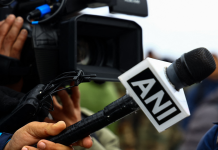In the five decades since the 1962 war with China and its aftermath, the report of the Brooks-Bhagat committee, which criticised the defence and intelligence establishment’s handling of the border dispute, has become a red-taped, quasi-mythical object of tremendous political import. Any discussion about it is inevitably connected to the events it covers and also, more importantly, to those who discuss it today. The re-emergence of Neville Maxwell, the old South Asia hand, and his first-hand access to the classified report needs to be understood in this context.
The Sino-Indian conflict of 1962 is the least known and discussed of the wars fought by Independent India, and its origins are as shrouded in half-truths and insinuations as events during the actual conflict. After the Dalai Lama was granted asylum in India in 1959 and violence between Tibetans and the Chinese Army, relations between India and China had become strained.
In 1962, claiming that India had set up forward observation posts within Chinese territory, the Chinese army advanced and overran Indian positions in the then Northeast Frontier Agency (NEFA), Arunachal Pradesh today, and Ladakh. After a series of retreats by the Indian army, which saw the Chinese reach the headquarters of the Indian Army’s Eastern Command at Tezpur in Assam, the Chinese withdrew, although they held and continue to hold strategic positions within territory claimed by both countries in Arunachal and Ladakh. The periodic border disputes regarding Arunachal are connected to these events.
Following the war, the govnernment instituted an inquiry commission to look into the military debacle, headed by then Lt Gen. Henderson Brooks and Brigadier PS Bhagat. The report was submitted in 1963, but was never made public by the government. As recently at 2013, Defence Minister AK Anthony stated in Parliament that the subject of the report included material which was extremely sensitive regarding India’s strategic and operational interests, a line which has been repeated by successive governments since 1963.
Neville Maxwell, the British journalist who covered the war and, subsequently, South Asia, researched the events of that period and obtained the report, which he has now published online, mentioning his disappointment that it has not yet been declassified, and lamenting what he terms his complicitness in not making it public earlier.
One might debate on the political implications of this development at this point just before the Lok Sabha elections. But it is quite certain, as experts observed when he made his research public in 1970, that Maxwell’s sources and data are impeccable. In essence, what he concludes is the Indian political establishment, and in particular Nehru, were aware of events unfolding on the border, and the actions taken by the intelligence Bureau which might have provoked a Chinese response. This goes against the dominant narrative that evolved after the war, in which the Chinese action was termed wholly aggressive and unilateral.
In either event, a full disclosure of the report is even more necessary today than it was in the 1960s. While some of the structural flaws, such as appointment of senior military officials and the responsibility of civilian intelligence have never been fully addressed by the Centre, the repercussions of the conflict on the Northeast have been apparent for anyone who is familiar with the region.
The 1962 war left a bitter legacy for the then Nehru government and its political heirs, and also for players within the defence and intelligence establishment. It also sowed the seeds for a new wave of separatist movements in the Northeast, stemming from a perceived abrogation by the Centre of its strategic responsibilities to the people of the region. The reappearance of the report in public discourse during the runup to this year’s elections is therefore of interest.
Unlike the wars that India has fought with its more militarily manageable western neighbour Pakistan, the 1962 conflict has never been satisfactorily interpreted in this country’s public space. The term ‘Chinese Aggression’, which the Nehru government chose to go with during that period, carries the unarticulated but apparent implication that this was a Chinese misadventure which capitalised on Nehru’s willingness to pursue closer ties with that country. Subsequent Indian historians and analysts had, for at least two decades after the war, broadly agreed to this.
The popular consensus about the war which then emerged was that China had taken advantage of Nehru’s policies and willingness to compromise, and India’s response to this ‘aggression’ was hampered by ínadequate men and materiél and made worse by direct interference from Prime Minister Nehru and Defence Minister VK Krishna Menon.
And yet divergent opinions were expressed. Maxwell, in his India’s China War, published in 1970, attempted a reappraisal of the established narrative. As strategy expert K Subrahmanyam, then director of the Institute for Defence Studies and Analysis (IDSA) observed in his review of Maxwell’s book the same year, Maxwell concluded that far from having a war inflicted on an unaware Nehru, the Prime Minister was in fact constantly aware of events on the border. Subrahmanyam also did not doubt the level and quality of Maxwell’s sources and data in arriving at this re-appraisal. And since Subrahmanyam was arguably India’s best proponent of realpolitik of that period, one might not doubt his appraisal of Maxwell’s work, although he did mention some ‘bias and distortion’in the British author’s work.
Maxwell’s research brought up certain parts of the Henderson Brooks Report which are so highly classified that senior bureaucrats of the MEA and Defence Ministers have, even today, limited access to them. He also mentioned that the process of appointment of defence higher-ups was counterproductive to India’s requirements. But even more than the nature of his access, the inquiry report is of increased relevance today. The dominant narrative which was created immediately after the war, including China’s alleged perfidy, the Indian defence establishement’s hobbling by the Cabinet and the much-protested innocence by Indian Intelligence and senior Army officials has never been fully discussed, despite repeated warnings by experts, including Subrahmanyam himself, that further obfuscations and secrecy would be counterproductive.
The war and the political blame-game that followed affected the people of the Northeast the most. When 80,000 Chinese troops breached the Bomdila defence line and reached the headquarters of the Army Eastern Command at Tezpur, and a force of 12,000 was patchily mobilised, causing an unprecedented humanitarian problem in NEFA and Assam, popular sentiment in these parts was about more immediate concerns and not about the faraway ideological imperatives of the New Delhi establishment. The apparent abandoning of the people of the region by the Centre left a lasting legacy of bitterness, particularly in Assam, and later events, including the rise of armed groups there has been well documented.
In contrast to the murky beginnings of the 1962 war and allegations of underhanded doings by the Intelligence Bureau which caused a Chinese reponse in the first place, the people of the Northeast could also compare the inadequate strategic response by the Indian defence machinery to the overwhelming display of military might against the Mizos, when the Indian Air Force bombed what is now the state of Mizoram in 1966, a mere four years after New Delhi chose not to use air power against the Chinese Army in NEFA and Ladakh. Even as the Brooks report continues to remain under wraps, this legacy of ill-will still festers and erupts in the region far away from mainstream discourse.
While the political angle behind the re-emergence of the Maxwell papers during a time when the Congress vice-president is visiting Arunachal Pradesh is apparent, it is certainly past time that the Henderson Brooks Report is laid bare in its entirety before the people. Even during those years, when virtually all the players in that great game (barring Nehru and Mao) were still alive, sane voices such as Subrahmanyam’s had called for the report to be de-classified. More than the political establishment, felt Subrahmanyam, the bureaucrats and apparatchiks of the intelligence and defence establishment were really wary of the report’s implications for their internal structure and manner of functioning, both of which needed a re-think for the future. And yet that future has come and gone, while the report continues to be secret. Maxwell, too, in subsequent years has continued to believe that no part of the report really negatively impacts India’s strategic imperatives. Rather, uncovering the truth would help heal the remembered, half-remembered and mythical slights, scars and misconceptions which have festered for so long.
As far as the political legatees of the then ruling party and Prime Minister are concerned, they should perhaps be aware that we now live in an age when not discussing sensitive matters only increases the likelihood of newer conspiracy theories emerging. And, on the other side of the political spectrum, if the hyper-patriots are antsy that any perceived original sin by India might actually come to light in the report, perhaps they should realise that great powers are not born out of selective amnesia about wars that are lost.
In either event, now that Maxwell has chosen to publish the report online, blocking access to it from this country is not a sign of confidence from the Centre, nor is it going to lay the ghosts of 1962 to rest.
– Jottings.in






